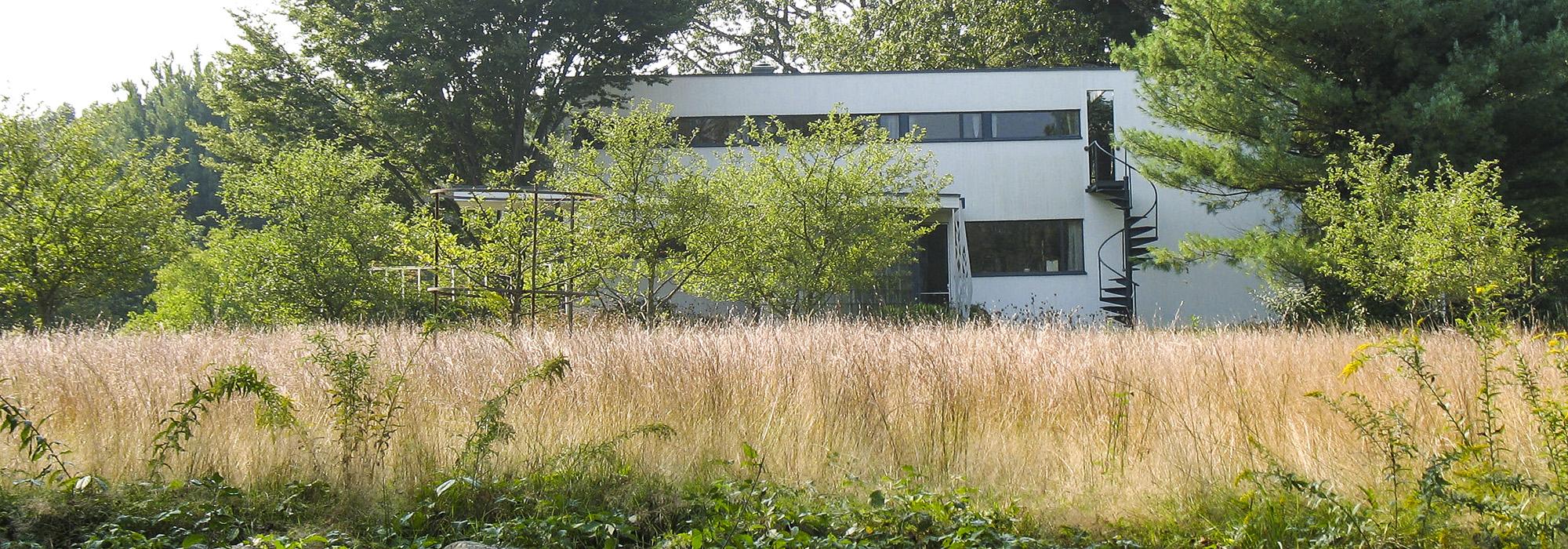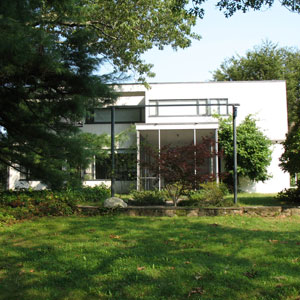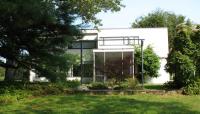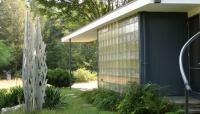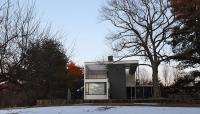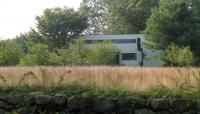Landscape Information
Upon accepting a teaching position at Harvard in 1937, Walter Gropius and his wife Ise designed a house and garden amid fields and woods on a pastoral property northwest of Boston. The two sited their Modernist house atop a hill in the center of a 5.5-acre parcel and spent the next 30 years developing the landscape. Repurposing the vernacular stone walls of the agricultural landscape, Gropius bordered a 20-foot wide grass plinth surrounding the house which drops away into a meadow. Similar stones used for the foundation of the house unite the architecture with its surroundings. An existing apple orchard on the northwest slope was retained and mature oaks, pines, and beech trees were transplanted to frame views and enclose the house. A formal garden was integrated with the house to unite interior and exterior spaces and provide a transition from the New England wetlands and woods. Trellised overhangs support grapevines and bittersweet while paired columns frame views from the house into the landscape. In 1957, inspired by a trip to Japan, Ise redesigned the perennial garden to incorporate azaleas, candytuft, and cotoneaster asymmetrically planted in a gravel bed surrounding a Japanese maple.
Ise Gropius bequeathed the property to the Society for the Preservation of New England Antiquities (now Historic New England) in 1980; it opened as a museum in 1984. The orchard and Japanese garden were restored to their 1960s appearance in 2001 by Mohr & Seredin one year after the estate was designated a National Historic Landmark.



